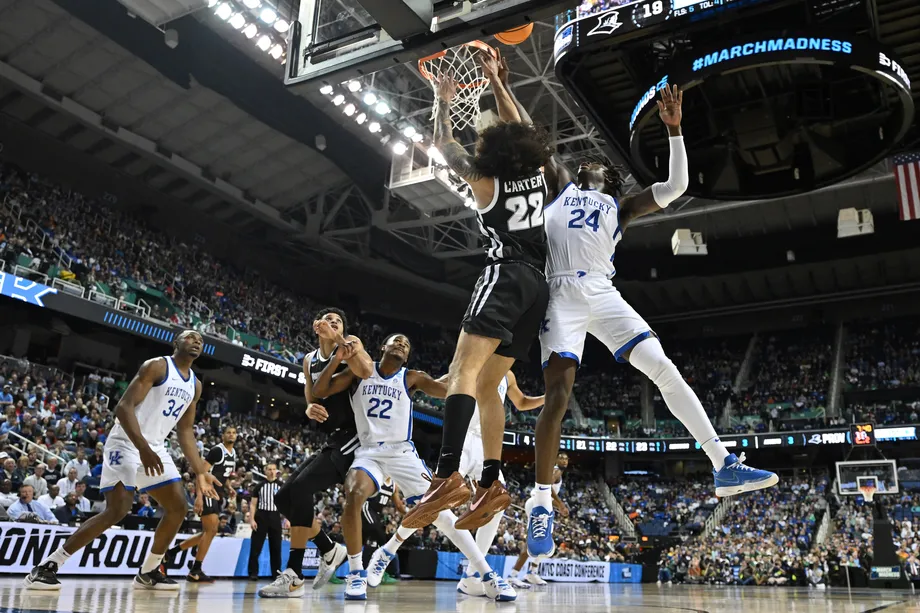Bumble
Wildcats vs. The Big East: A Deep Dive into a Storied Rivalry
LEXINGTON, KY – For generations of college basketball fans, the Kentucky Wildcats represent the pinnacle of tradition and success. Their iconic blue and white, coupled with a record eight NCAA championships, evoke an image of dominance. Yet, as BBN faithful know all too well, even the most legendary programs have their Achilles’ heel. When it comes to facing opponents from the Big East Conference, the Wildcats’ historical ledger often tells a tale of fierce competition and, at times, frustrating March exits.
Samuel Hahn, a keen observer of Kentucky basketball for A Sea of Blue, recently highlighted this fascinating dynamic, noting that compared to their strong showings against the Big Ten, Big 12, and ACC, the Wildcats haven’t always fared as well against the current iteration of the Big East in NCAA Tournament play. This observation rings true, with certain matchups having etched themselves into the collective memory of both fanbases.
To fully understand UK’s all-time record against the Big East, it’s essential to break down their history against each of the current 11 member institutions: Butler, Creighton, DePaul, Georgetown, Marquette, Providence, St. John’s, Seton Hall, Villanova, UConn, and Xavier. While a single comprehensive win-loss record against the entire evolving Big East conference over the decades is complex due to conference realignments, we can examine individual program rivalries to paint a clearer picture.
The Storied Struggles: UConn and Marquette
Hahn’s article specifically calls out UConn and Marquette as thorns in Kentucky’s NCAA Tournament side, a sentiment strongly supported by historical data.
The rivalry with the UConn Huskies is perhaps the most notable. These two bluebloods have met five times in official games, with UConn holding a decisive 4-1 advantage over Kentucky. Crucially, all four of UConn’s victories have come in the NCAA Tournament. Most painfully for Kentucky fans, these include the 2011 Final Four, where Kemba Walker led the Huskies to a narrow 56-55 victory, denying John Calipari’s first Kentucky team a shot at the title. Just three years later, in 2014, UConn again delivered a knockout blow, defeating the Wildcats 60-54 in the National Championship game. The solitary Kentucky win against UConn came in the 2009 SEC/Big East Invitational. This record truly underscores Hahn’s point about March struggles against Big East powerhouses.
Similarly, the Marquette Golden Eagles have proven to be a formidable foe for the Wildcats in the NCAA Tournament. While the overall series record is tied at 7-7 (according to some historical accounts), Marquette has had the upper hand in several crucial March Madness contests. Key NCAA Tournament losses for Kentucky include the 2008 First Round, 2003 Regional Finals (when #1 seed Kentucky was upset by Dwyane Wade’s Marquette), and the 1994 Second Round. These losses illustrate a pattern of Marquette ending Kentucky’s national championship aspirations on multiple occasions.
A Dominant Edge (Mostly) in Regular Season Play
While the NCAA Tournament can be a different beast, Kentucky has largely held its own, and in some cases, dominated Big East opponents in regular-season matchups.
The case of Xavier is a prime example. As Hahn noted, Kentucky has played the Musketeers 39 times in regular-season contests, winning a remarkable 37 of them. This overwhelming 37-2 record against Xavier highlights a consistent historical advantage outside of March. Interestingly, despite this extensive history, Kentucky and Xavier have never met in the NCAA Tournament, a testament to the unpredictable nature of bracketology.
Other Big East teams have also seen Kentucky’s dominance in regular-season play. For instance, Kentucky holds a commanding 13-1 record against DePaul. Against St. John’s, a storied program in its own right, Kentucky has a more balanced but still favorable record. Matches against teams like Villanova and Georgetown have often been high-profile, closely contested affairs, reflecting the competitive nature of both conferences.
The Evolving Landscape of the Big East
It’s important to remember that the Big East Conference has undergone significant transformations over the years, with various schools joining and departing. This fluidity makes a singular “all-time record against the Big East” somewhat fluid itself. The “11 teams” Hahn refers to are the current members, and Kentucky’s history with former Big East powerhouses like Syracuse, West Virginia, and Louisville (which now plays in the ACC) also contributes to the broader narrative of UK’s encounters with teams that were once part of that formidable league. For example, Kentucky holds an 8-3 record against Syracuse and an 11-3 record against West Virginia. The heated rivalry with Louisville, a former Big East member, further underscores the competitive nature of these regional battles.
Conclusion
Samuel Hahn’s assessment of Kentucky’s record against Big East opponents, particularly in the crucible of the NCAA Tournament, holds water. While the Wildcats boast an impressive overall program history and often dominate individual Big East teams in regular-season play (like Xavier), the postseason has proven to be a different story against some of the Big East’s most formidable programs, namely UConn and Marquette. This ongoing narrative of intense, high-stakes contests against the Big East ensures that future matchups will continue to be must-watch events for college basketball enthusiasts, adding new chapters to these storied rivalr
Related





























